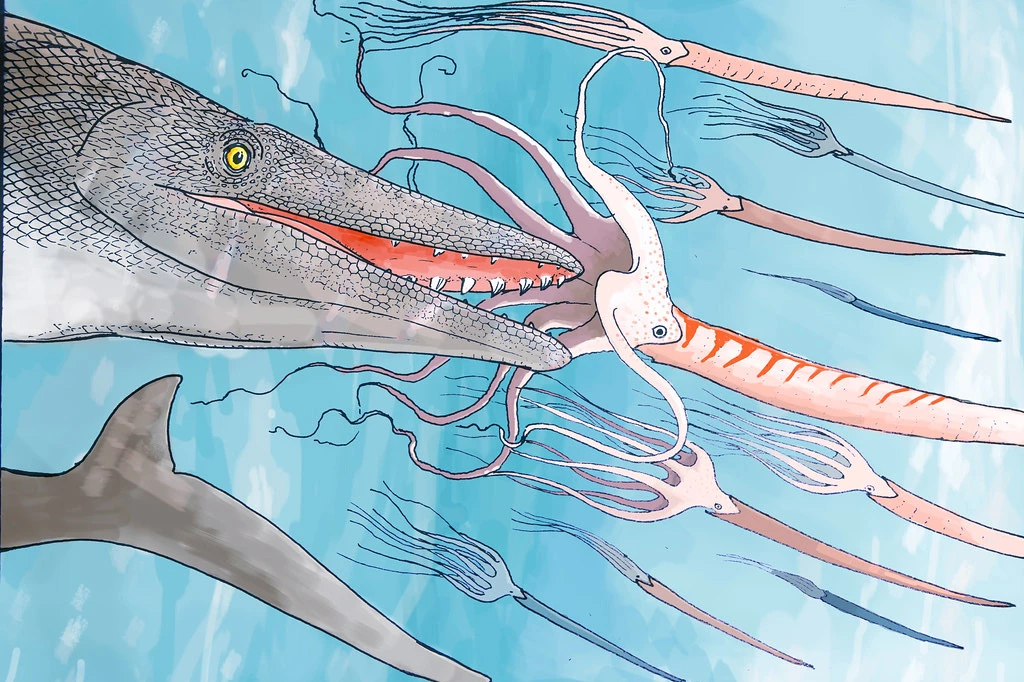Scientists have discovered a new species of mosasaur, a giant sea-dwelling lizard that dates back to the age of the dinosaurs, that stands out because of its unique, star-shaped teeth.
It’s thought that mosasaurs and other marine reptiles were on a rapid evolutionary path until about 66 million years ago when a 6-mile-wide (10-km-wide) space rock called the Chicxulub impactor, slammed into the Earth off the coast of what's now the Gulf of Mexico, wiping out the dinosaurs and around 90% of life on the planet.
The Maastrichtian Age occurred 72.1 million to 66 million years ago, during the Cretaceous Period. The Oulad Abdoun Basin in Morocco is an important site for vertebrate fossils; most, mainly marine-based, specimens have been unearthed there. The phosphate deposits in the area range from the Late Cretaceous to the Early Paleogene, a period of around 25 million years.
And it’s in Sidi Chennane, in the south Oulad Abdoun Basin, that scientists found this new species of mosasaur from the Maastrichtian Age, which they named Stelladens mysteriosus. Although it shared some similarities with other mosasaurs, what stood out to scientists was its unusually shaped teeth.
Unlike most mosasaurs with bladelike, serrated ridges on the back and front of their teeth which helped them eat their prey, Stelladens had between four and six blades running vertically down the tooth. The blades give the teeth the appearance of the tip of a Phillips-head screwdriver.

“It’s a surprise,” said Nick Longrich, lead author of the study. “It’s not like any mosasaur, or any reptile, even any vertebrate we’ve seen before.”
Several teeth were found to have the same unique shape, suggesting to the scientists that it was not caused by pathology or mutation. They think the Stelladens’ teeth indicate that they ate a specialized diet but can’t be sure what it consisted of.
“We have no idea what this animal was eating, because we don’t know of anything similar either alive today, or from the fossil record,” said Longrich. “It’s possible it found a unique way to feed, or maybe it was filling an ecological niche that simply doesn’t exist today.”
The scientists noticed the small, stout teeth were worn on the tips, which ruled out a diet of soft-bodied prey, but they weren’t strong enough to crush heavily armored animals like clams or sea urchins.
“That might seem to suggest it’s eating something small, and lightly armored – thin-shelled ammonites, crustaceans, or bony fish – but it’s hard to know,” Longrich said. “There were weird animals living in the Cretaceous – ammonites, belemnites, baculites – that no longer exist. It’s possible that this mosasaur ate something, and occupied a niche, that simply doesn’t exist anymore, and that might explain why nothing like this is ever seen again.”
Ammonites were a group of marine mollusks, belemnites were squid-like cephalopods that possessed an internal skeleton, and baculites were cephalopods with an almost straight shell.
The discovery of Stelladens shows that even after years of uncovering fossils from Morocco, the area is still rich with new species waiting to be discovered.
“We’re not even close to finding everything in these beds,” said Longrich. “This is the third new species to appear, just this year. The amount of diversity at the end of the Cretaceous is just staggering.”
The study was published in the journal Fossils.
Source: University of Bath





